In order to identify the Ayurvedic concept of Kapha, the symbolic agent for the sources of biological energy, and to properly apply it for medical purposes, it has to be investigated in detail. Here we present eight different aspects of Kapha:
- Kapha in the sense of water and mucus
- Kapha in the sense of tastes
- Kapha in the sense of the artery system
- Kapha in the sense of health
- Kapha in the sense of disease
- Kapha in the sense of aggravating agents
- Kapha in the sense of diagnosis
- Kapha in the sense of treatment
Kapha in the Sense of Water and Mucus
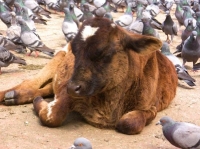 The metaphysical “Water Element” is known by its properties, while ordinary water demonstrates its innate nature. As with Vata and Pitta, the formula for the properties of the Water Element has a direct correspondence to the formulas of the biological substances mucus and Kapha. Kapha contains the physical properties of Guru (heavy), Shita (cold), Mridu (soft), Snigdha (grease), Sthira (stable) and Picchila (viscous). All of these physical properties except Sthira (stable) belong to the Ayurvedic description of the properties of water. Ayurveda therefore introduces Kapha (mucus) as being a biological water containing one property from the Earth Element. That the physical property called stability (Sthira) is included indicates that, in Ayurvedic understanding, the biological water of the body contains some of the Earth Element. That is, the biological water of the body contains stabilizing substances.
The metaphysical “Water Element” is known by its properties, while ordinary water demonstrates its innate nature. As with Vata and Pitta, the formula for the properties of the Water Element has a direct correspondence to the formulas of the biological substances mucus and Kapha. Kapha contains the physical properties of Guru (heavy), Shita (cold), Mridu (soft), Snigdha (grease), Sthira (stable) and Picchila (viscous). All of these physical properties except Sthira (stable) belong to the Ayurvedic description of the properties of water. Ayurveda therefore introduces Kapha (mucus) as being a biological water containing one property from the Earth Element. That the physical property called stability (Sthira) is included indicates that, in Ayurvedic understanding, the biological water of the body contains some of the Earth Element. That is, the biological water of the body contains stabilizing substances.
Weight depends upon the amount of both water and earth. Anything that contains more water and Earth Elements (in comparison to the other elements) in considered heavy. Especially in the vegetable kingdom, water plays an important role in the weight of the plant. In this sense, any object that is heavy by nature contains more water as well as a measure of the Earth Element. Anything which is heavier by nature counteracts that which is lighter (laghu). The counteraction of the heavy by the light means that the amount of the water and Earth Element in a heavy object are higher in its physical construction in comparison to the other lighter elements of air, fire and space. For example, if a light substance absorbs water, it becomes heavier. Following this logic, Kapha is mucus, a symbolic vital bodily water which contains as well a certain amount of the Earth Element.
Any object that contains more water by nature gets a lower temperature, because water is cold (Shita). The physical property of coldness counteracts heat, and as the power of cold increases, the power of heat goes down. In this sense, anything that contains more water is naturally cold or imparts a cooling sensation. For example, the mucus of the body reacting with bodily heat helps regulate the temperature of the body.
Objects that contain more water are observed to be soft (Mridu) to the touch. This softness is a sensation created by water that has the nature of expanding and dissolving the other ingredients made from the different elements. The softness property increases in object as they absorb more water. For example, most things which are hard to the touch will swell and become softer after being soaked in water. If a soft object is kept in the sun, it hardens as its water disappears. The soft vital mucus of the body counteracts hardness to keep the skin, the flesh and the organs soft.
Any object that contains more water, when reacting with heat, will protect itself by releasing some of its grease (Snigdha), because bodily water contains grease. Grease is counteractive to dryness, and dryness is the condition that occurs when water is affected by heat and air. In this sense, the Water Element, to maintain its integrity against the effect of heat and air, always releases some kind of grease. For example, against the moderate heat of the sun or fire, the mucus of the body releases some protective grease that is why the face especially becomes greasy on hot days.
For something to be attachable, it must be sticky (Picchila), a property of the Water Element. Nothing can be sticky or viscous without water because the liquidness of water pays a role in contact and attachment (recall the absorbant quality of water). The liquid bodily water with its Earth Element substances becomes more viscous or sticky when condensed. That is, the properties of condensed bodily fluids reveal the presence of the Earth Element in the bodily water. This is presented by Ayurveda as the property called Sthira, which literally means stable. In the fully condensed stage nothing can move. Therefore, stability (Sthira) is counteractive to motion. The mucus or phlegm of the body is viscous because it contains water along with a measure of the Earth Element. Healthy bodily water (which is sweet in taste) contributes to the stability and solidity of the body.
Following this analysis of physical properties of the Water Element and mucus, the medical word Kapha can be translated as being biological water or vital mucus. This biological water or vital mucus has different roles in the proper functioning of the body.
The Five Types of Mucus
Ayurveda maintains that the biological water or the vital mucus has five different forms that encompass its complete functions in the body. These names of these forms are Kledaka, Alambaka, Bodhaka, Tarpaka and Shlesaka.
- Kledaka is the vital mucus that is active in the stomach. This vital mucus is the main source of other biological waters of the body, and its main function is to dissolve and capture food for proper digestion.
- Alambaka is the vital mucus that is active in the chest. Its main function is to give stability and power to the big veins and arteries in the chest necessary to keep the heart suspended in place.
- Bodhaka is the vital mucus that is active on the tongue, necessary to properly distinguish the six tastes.
- Tarpaka is the vital mucus that is active in the brain, necessary for proper function of the sense organs.
- Shlesaka is the vital mucus that is located in the joints, necessary for proper function and lubrication of the joints.
These five forms of vital biological mucus have different names and functions, but in the sense of fundamental substance they are identical in their physical properties.
Kapha in the Sense of Taste
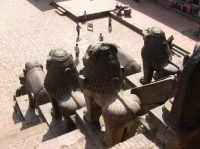 The sweet, sour and salty tastes in the form of either foods or herbs are considered to be Shlesmala. Shlesmala foods or herbs are those which cause either more mucus or weight accumulation in the body. They are substances which contain more Water Element in their physical construction. In this sense, the proper use of sweet, sour and salty tastes causes balance of the vital mucus substance, and the vital mucus regulates the function of the artery system. The excessive use or daily use of Shlesmala substances results in the over-balance of the mucus substance and over-activity of the artery system. Balance of the mucus substance means there is a regular and healthy supply of biological water in the body for the purpose of fueling energy. Over-balance of the mucus substance means there is more biological water or vital mucus accumulation in the body that causes blockages, and weight increases.
The sweet, sour and salty tastes in the form of either foods or herbs are considered to be Shlesmala. Shlesmala foods or herbs are those which cause either more mucus or weight accumulation in the body. They are substances which contain more Water Element in their physical construction. In this sense, the proper use of sweet, sour and salty tastes causes balance of the vital mucus substance, and the vital mucus regulates the function of the artery system. The excessive use or daily use of Shlesmala substances results in the over-balance of the mucus substance and over-activity of the artery system. Balance of the mucus substance means there is a regular and healthy supply of biological water in the body for the purpose of fueling energy. Over-balance of the mucus substance means there is more biological water or vital mucus accumulation in the body that causes blockages, and weight increases.
The bitter pungent and astringent tastes contain more air, fire and Earth Element that all cause dryness. The greasy sweet sour and salty tastes by nature counteract the dry bitter, pungent and astringent tastes. Therefore, the excessive use of bitter, pungent and astringent taste results in under-balance of the mucus substance causing a reduction of or inactivity of the artery system. The under-balance of the mucus substance means the amount of biological water has become less in the body.
Kapha in the Sense of the Artery System
 Ayurveda explains that the vital mucus helps to control bodily heat. An increase in the amount of vital mucus results in coldness, the amount of which depends upon the supply of arterial fluids. Blood contains many things in its watery fluids. The sweet water of the blood is called serum. Sweet things cause a cooling sensation. The blood of the artery system contains more serum in comparison with the veins. Therefore it is clear that the artery system controls the nutritional supply to the tissues of the body. In this sense the artery system is regarded as a regulator of the vital mucus or Kapha.
Ayurveda explains that the vital mucus helps to control bodily heat. An increase in the amount of vital mucus results in coldness, the amount of which depends upon the supply of arterial fluids. Blood contains many things in its watery fluids. The sweet water of the blood is called serum. Sweet things cause a cooling sensation. The blood of the artery system contains more serum in comparison with the veins. Therefore it is clear that the artery system controls the nutritional supply to the tissues of the body. In this sense the artery system is regarded as a regulator of the vital mucus or Kapha.
The function of the artery system controls and regulates the function of the nervous system and the function of the nervous system controls and regulates the function of the artery system. They have a mutual coordination and their natures are opposite. For demonstration, the combination of sweet, sour and salty tastes that are greasy and heavy, can be used in the proper way and in the proper amount to stimulate the function of the artery system. The stimulated artery system becomes more powerful to control and regulate the function of the nervous system. Deficiency of the sweet, sour and salty tastes causes weakness of the artery function. In this condition, the function of the artery system cannot control and regulate the function of the nervous system. In the same way the excessive use of them causes over-activity in the function of the artery system. While the artery system is overactive, the function of the nervous system, by nature, becomes weak. This is why eating too much oily greasy food makes a person sluggish and dull. In regard to these demonstrations, it is clear that the proper use of sweet, sour and salty tastes causes balance in the arterial function. It should be equally clear that the over-use of them results in the over-balance of arterial function. In the same way deficiency of them causes the under-balance. The negative and positive function effects of foods and herbs on the artery system can be understood by reference to the physical properties of the mucus formula.
Kapha in the Sense of Health
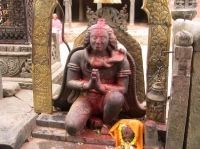 Health is signified in Ayurveda by the three balanced bodily substances. Kapha has its own role as Vata and Pitta have their roles. The main function of the Kapha substance is to provide fuel for energy. This fuel is considered the source of bodily energy. The source of energy is the nourishment of the body tissues. This nourishment has to be supplied in the proper way and in the proper amount for health. It is clear that without the proper supply of nourishment no energy exists.
Health is signified in Ayurveda by the three balanced bodily substances. Kapha has its own role as Vata and Pitta have their roles. The main function of the Kapha substance is to provide fuel for energy. This fuel is considered the source of bodily energy. The source of energy is the nourishment of the body tissues. This nourishment has to be supplied in the proper way and in the proper amount for health. It is clear that without the proper supply of nourishment no energy exists.
Sources of energy are everywhere in the surrounding atmosphere and in our foods and herbs. Water itself is nourishment. The source of energy of the atmosphere can be seen in the dew, the nutritive moisture that emerges on edible plants in the low temperature of night. The sources of energy found in foods and herbal drugs depend upon the sweet, sour and salty taste. That is, sweet foods or herbal drugs are especially full of nutritive energy. The sweet, sour and salty tastes in general contain more Water Element. For health, the Water Element from various physical sources must be supplied in proper way and proper amount. This is a general rule necessary for maintaining the proper function of the artery system and the balance of the vital mucus (biological water or Kapha). The balanced Kapha substance provides the proper nourishment for the body tissues.
Kapha in the Sense of Disease
 The imbalance, under-balance or over-balanced Kapha substance causes certain specific types of disease. This is a general principle of the Ayurvedic healing science. The imbalance or under-balanced substance is called Kapha ksaya. In this stage, the Kapha substance does not have enough nourishing substances in its composition. The over-balanced Kapha substance is called Kaphavriddhi or Kruddha Kapha. In general, the nourishing Kapha substance should be sweet in taste. When imbalance occurs, the toxic Kapha substance which forms is termed “salty mucus” or Kapha dosha. The under-balanced Kapha substance means that the Water Element or the physical properties of the mucus formula have become less in their natural proportions in the body construction. The over-balanced Kapha substance means the Water Element or the physical properties of the mucus formula have become higher in their natural proportion in the body construction.
The imbalance, under-balance or over-balanced Kapha substance causes certain specific types of disease. This is a general principle of the Ayurvedic healing science. The imbalance or under-balanced substance is called Kapha ksaya. In this stage, the Kapha substance does not have enough nourishing substances in its composition. The over-balanced Kapha substance is called Kaphavriddhi or Kruddha Kapha. In general, the nourishing Kapha substance should be sweet in taste. When imbalance occurs, the toxic Kapha substance which forms is termed “salty mucus” or Kapha dosha. The under-balanced Kapha substance means that the Water Element or the physical properties of the mucus formula have become less in their natural proportions in the body construction. The over-balanced Kapha substance means the Water Element or the physical properties of the mucus formula have become higher in their natural proportion in the body construction.
When the physical properties of the mucus formula go down in proportion, the artery system by nature becomes less active or inactive. When the physical properties of the mucus formula go up in the proportion, the artery system in the same way becomes overactive. Under or over-activity of the artery system of the body (the arteries in any part of the body or within any organ) is the cause of many physical disorders.
Under-activity of the artery system causes poor blood circulation, dryness, internal heat sensations, poor nourishment and insomnia. The over-active artery system results in excess exudation and accumulation of salty or toxic mucus in the affected area. In this condition, cold sensations, heaviness, edema, itching pain, numbness, paralysis and various forms of blockage are the characteristic physical disorders that result.
Kapha Vikara / Diseases of the Kapha System
The disease processes listed here are the ones most commonly listed in the early texts. This list is by no means exhaustive.
- Drowsiness
- Laziness, sluggishness or excess need for sleep
- Watery mouth
- Excess phlegm, urine or stool
- Thickening of the artery walls
- Goiter
- Obesity
- Weak digestive power
- Urticaria
- Heavy sensation in the heart
- Sweet taste in the mouth
Symptoms of Kapha Dysfunction
Besides these illnesses connected with the overactive artery system, there are some typical conditions and symptoms found in many different diseases that point to an overactive artery system:
- Diseases where symptoms develop very slowly with mild complications.
- Appearance of white or pale color on the facial complexion or at the affected area.
- Greasiness in any affected area of the body.
- White or pale color of the nail, stool, urine, or in conjunctiva of the eyes or mucus membrane of the mouth
- Obesity
- Patients with a dull or sluggish character.
Kapha in the Sense of Aggravating Agent
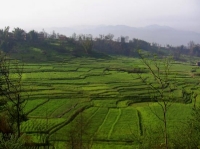 The artery system increases function with increases in the Kapha substance or the activities of the physical properties of the mucus formula. Therefore, it can become over-balanced by the following Kapha aggravating agents:
The artery system increases function with increases in the Kapha substance or the activities of the physical properties of the mucus formula. Therefore, it can become over-balanced by the following Kapha aggravating agents:
- Excessive or daily use of any kind of food or drug which is either sweet or sour or salty in taste, including greasy food, milk products except cheese, pork, beef, fish, buffalo, mutton or new rice (right after harvesting).
- Sleeping during the day, especially after meals.
- Lack of exercise, over-eating or not bathing.
- Cold climate, cold foods or foods or herbs which are cooling in effect.
- Heavy food that is hard to digest.
- Starchy foods with sticky properties.
- Overconfidence or excess happiness.
- The effect of spring and winter.
- Activity right after meals affecting the stomach, such as exercise.
- The natural effect of morning and night.
These Kapha aggravating agents during a Kapha type of disease cause natural over-activity in the function of the artery system. This will worsen the symptoms of any disease related to the Kapha substance. In this sense, Ayurveda presents them as fundamental causes of diseases concerned with the Kapha substance.
Kapha in the Sense of Diagnosis
 In order to diagnose those diseases that are classified as due to Kapha, or to ascertain the presence of Kapha in any disease, there are certain unique Ayurvedic tests. These tests have to be carried out one by one for final decision.
In order to diagnose those diseases that are classified as due to Kapha, or to ascertain the presence of Kapha in any disease, there are certain unique Ayurvedic tests. These tests have to be carried out one by one for final decision.
- Pain test. Presence of itching or dull pain is positive for Kapha causation.
- Touch Test. If a painful area or the area affected with disease gets no better or worse from having gentle pressure applied, it is positive for Kapha causation.
- Color Test. Pale or white color of the affected area, the complexion, the nail, the stool or the urine is positive.
- Stomach activity Test. If the symptoms of disease become worse while the stomach is active digesting food (within two hours after food intake), it is positive for Kapha.
- Time Test. If the symptoms of disease become worse in the morning and at night, it is positive.
- Pulse Test. If the pulse is felt to move around up and down with a strong sensation, almost like double pulses, it is positive.
- Seasonal test: If the symptoms of disease worsen in spring or winter, it is positive for Kapha causation.
- Taste Test. If the symptoms of disease worsen from the daily or excessive use of foods, drugs or herbs that are either sweet or sour or salty in taste, it is positive for Kapha causation. A sweet taste of the mouth is also positive.
- Climate Test. If the symptoms of disease worsen in an alpine climate or a cold climate, it is positive.
- Constrictory Test. If the symptoms of disease worsen while using foods or herbs with constrictory effects, it is positive for Kapha.
- Nature Test. If the symptoms of disease are worse in a person with slow activity, or one who is dull and fat (Kapha Prakriti), it is positive.
- Mind Test. If the symptoms of disease worsen when the mind is over-confident or overjoyed, it is positive for Kapha causation.
- Skin test. If the affected area is greasy, it is positive.
- Swelling Test. If a swollen area goes down when pressed and does not immediately restore its shape, it is positive.
- Fever Test. Mild temperature is positive for Kapha.
- Preference Test. Desire for heat or preference for hot foods is positive.
Kapha in the Sense of Treatment
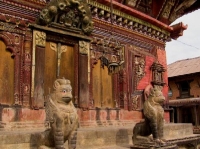 The fundamental theory of treatment concerning diseases or the conditions of disease that are classified with the character of Kapha is based upon restoring the balance of the over-balanced artery system, and/or to reduce the over-powerful physical properties of the mucus formula. Ayurveda emphasizes that to restore the balance of the artery system in any part of the body the stomach can be cleaned with emetic drugs. The stomach in general, is the central source of mucus, the biological water of the entire body. This mucus that becomes active as food is dissolved and mixed in the stomach, enters the portal vein and lymphatic duct system together with the essence of food dissolved in it. As more exudation of water-like mucus in the stomach occurs, it activates the function of the artery system, the carrier of nutritive serum. Therefore, in addition to all other possible treatments, emetic drugs have been found by Ayurvedic doctors to be extremely important to stop the supply of mucus and to reduce the watery element within the arterial system (see list of emetic drugs on page 145). Before using emetic drugs, it is important to have a steambath. The main purpose of the steambath is to apply heat, causing sweating and a resultant cleansing of the lymphatic duct system, and improved filtration and breakup of blockages caused by excess exudation.
The fundamental theory of treatment concerning diseases or the conditions of disease that are classified with the character of Kapha is based upon restoring the balance of the over-balanced artery system, and/or to reduce the over-powerful physical properties of the mucus formula. Ayurveda emphasizes that to restore the balance of the artery system in any part of the body the stomach can be cleaned with emetic drugs. The stomach in general, is the central source of mucus, the biological water of the entire body. This mucus that becomes active as food is dissolved and mixed in the stomach, enters the portal vein and lymphatic duct system together with the essence of food dissolved in it. As more exudation of water-like mucus in the stomach occurs, it activates the function of the artery system, the carrier of nutritive serum. Therefore, in addition to all other possible treatments, emetic drugs have been found by Ayurvedic doctors to be extremely important to stop the supply of mucus and to reduce the watery element within the arterial system (see list of emetic drugs on page 145). Before using emetic drugs, it is important to have a steambath. The main purpose of the steambath is to apply heat, causing sweating and a resultant cleansing of the lymphatic duct system, and improved filtration and breakup of blockages caused by excess exudation.
The bitter, pungent and astringent tastes (in the form of foods, drugs or herbs) stimulate the activities of the nervous system, primarily because they result in dryness. These tastes are counteractive to the sweet, sour and salty tastes that aggravate the function of the artery system. Therefore, bitter or pungent or astringent tasting foods and drugs are prescribed as medicines to restore the balance of the Kapha substance. To be effective in restoring balance to the artery system, these tastes must have the physical property of being dry (Ruksa). Otherwise, they cannot restore the balance. In the same way, any substance that has a dilatory effect or a drying effect, no matter what its taste, can be prescribed as a medicine to restore balance to the artery system.
Medicines for Kapha
Some common herbs used to treat Kapha are:
- Vidanga seeds (Embelia ribes)
- Guduchi stem (Tinospora cordifolia)
- Chitraka root (Plumbago zeylanica)
- Maricham (black pepper / Piper nigrum)
- Pippali fruit (long pepper / Piper longum)
- Gajapippali fruit (Piper chava)
- Shatapuspa seed (anise / Pimpinella anisum)
- Bibhitaki fruit (Terminalia belerica)
- Yavani seed (wild omum / Trachyspermum ammi)
A reliable formula for treating Kapha to aid digestion and reduce mucus is Trikatu. For Kapha with swelling and/or solid accumulations Kanchanara guggulu can be used.
Fasting, Nasal Snuff and Exercise
 Fasting has medicinal value in the treatment of diseases or condition of diseases with presence of Kapha. During periods of fasting there is less supply of watery mucus from the stomach. This reduces the watery element in the arterial system.
Fasting has medicinal value in the treatment of diseases or condition of diseases with presence of Kapha. During periods of fasting there is less supply of watery mucus from the stomach. This reduces the watery element in the arterial system.
The practice of cleaning the sinus with nasal snuff has particularly therapeutic value to restore balance to the cerebral artery system, because the nose is the passageway to clean the head sinuses. Medicated snuff causes dilation of the capillaries of the nose. The patient will open their eyes wide and sneeze, causing removal of the mucus.
Physical exercise also has therapeutic value in the treatment of diseases with an over-balanced artery system. The main purpose of exercise is to increase blood circulation and loosen and warm the body. The heat dilates the capillaries and increases lymphatic flow, cleansing via filtration and perspiration.
Following the background and logic of Ayurveda, effective Kapha treatments will include:
- Steambathing
- Use of emetic drugs
- Use of bitter, pungent and astringent tasting medicines or foods
- Intake of foods or drugs that increase heat
- Fasting
- Medicated snuffs, and
- Physical exercise.
0 Responses to “The Different Aspects of Kapha”